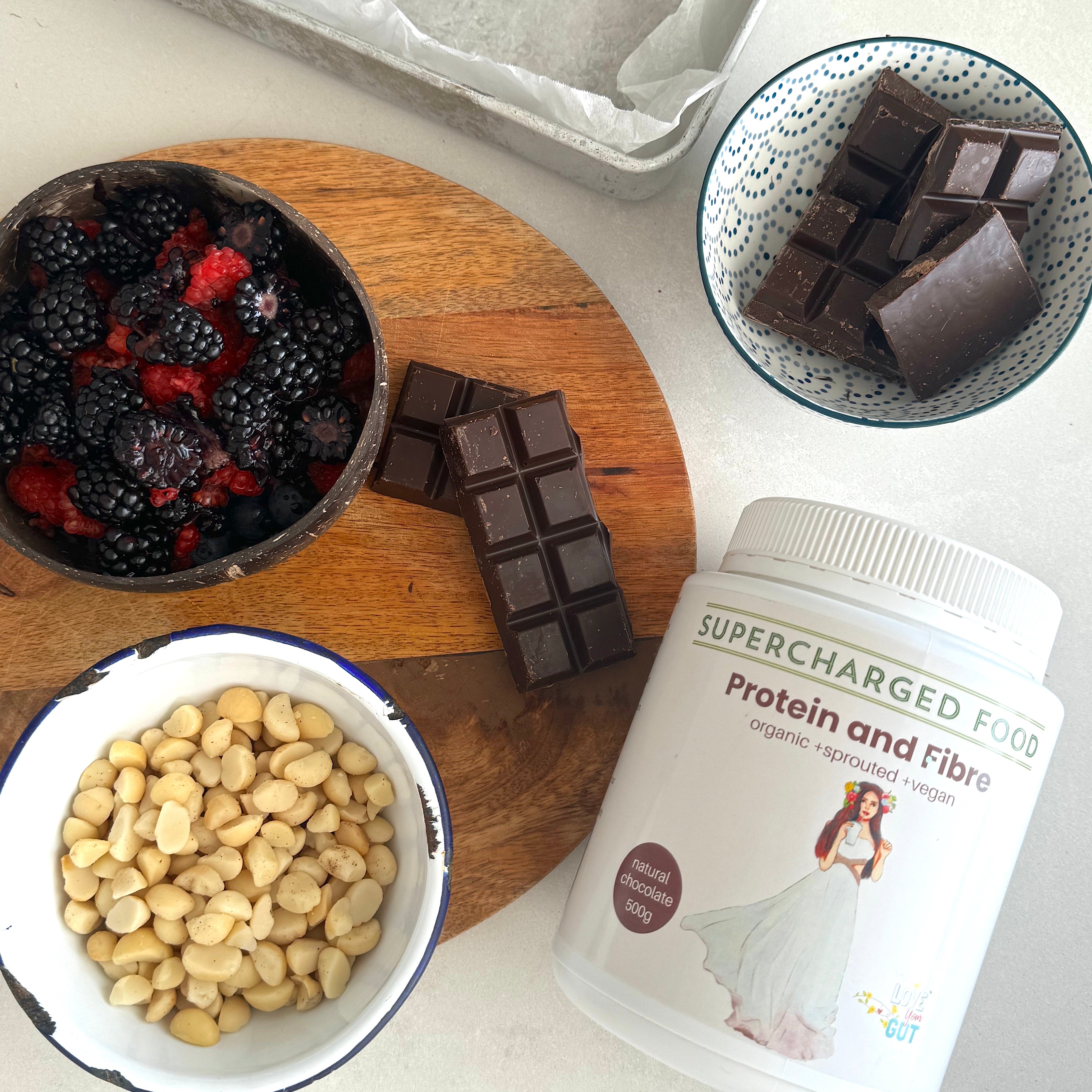Fulvic acid, known as Shilajit in India, has been used in Ayurvedic medicine for over 3000 years due to its medicinal properties.1 In ancient texts, Shilajit has been shown to modulate the immune system, provide antioxidant effects and reduce both hypertension and hyperglycaemia.1 When applied externally, Ayurvedic leaders use it as an antiseptic and analgesic.1
If you’re looking at this and wondering, where’s the science? Don’t worry, I’ve got you covered.
Modern research recognises the immunomodulatory and gastrointestinal impact fulvic acid can have. So, it’s time to bridge the gap between ancient wisdom and modern science to understand the full implications fulvic acid can have on health and wellbeing. I invite you to join me as we look into the research behind the wondrous ancient ingredient and get to the bottom of its modern-day effects. But first, let’s discuss what on earth fulvic acid is.
What is Fulvic acid?
Fulvic acid is a subclass of diverse compounds known as humic substances, which are a by-product of organic degradation from microorganisms in the soil.2 Fulvic acid differentiates itself from other humic substances because of its physical and chemical properties. It has remarkable potential for improving the earth’s soil and the health of humans.
Fulvic acid on the gut
Sufficient evidence links poor gut health with inflammation and disease; indicating the need for optimal digestive health for everyday wellbeing.3 In agriculture, fulvic acid has improved soil microbe composition and aided in the nutrient absorption of plants, leading modern scientists to believe fulvic acid may improve gut flora, nutrient absorption and heal gut-related disorders.4 Fulvic acid can support the integrity of the gut lining and replenish the microbiota, increasing the bioavailability and absorption of nutrients through enhancing digestive enzymes, like proteases – it’s the best friend your gut didn’t know it needed.2
Fulvic acid and negative ions
Being exposed to negative ions is a positive thing! Confusing, I know so let us explain. Negative ions are molecules that float in the air and are electrically-charged. Due to their small size, negative ions readily absorb into the bloodstream and skin.11Research suggests negative ions can reduce symptoms of depression, enhance cognitive performance and promote antimicrobial activity.11 On top of this, exposure to negative ions can help regulate sleep patterns and mood, reduce stress, boost immune function and increase the metabolism of carbohydrates and fats.11
When negative ions are ingested, they gently move through the digestive tract and absorb and attract pathogenic bacteria, metals and parasites, picking them up and excreting them through the bowels.
Some ways to generate negative ions include getting outdoors in nature and consuming fulvic acid. Fulvic acid is composed of some of the highest negatively charged minerals in the world; which is why just a few drops a day is all you need to get the good ions into your system. The negative ions within fulvic acid further increase its adaptogen capacity, helping build up a defence against stress.11
The anti-inflammatory, antioxidant and antimicrobial impact of fulvic acid
Fulvic acid modulates the immune system through having an anti-inflammatory, antioxidant and antimicrobial impact on the body.2
Several studies indicate that fulvic acid can reduce the release of proinflammatory mediators from cells, including the reduction of TNF-α, interleukin-4 (IL-4), and IL-13 from mast cells, decreasing overall inflammation.9
Radical oxygen species (ROS) contribute to the development of various diseases, including diabetes, atherosclerosis, Alzheimer’s disease and gastrointestinal disease.5 When there’s a shift towards higher ROS in the body, there’s an increase in oxidative stress, cellular dysfunction, lipid peroxidation and cell death.2 To prevent damage caused by ROS, bodily tissues require extra antioxidants. Fulvic acid is an antioxidant and therefore, a free radical scavenger, meaning it helps reduce ROS, oxidative stress and damage.5 Fulvic acid is an excellent candidate to be used in pharmaceutical and food industries as it’s an accessible source of antioxidants.6
An in vivo study looked at fulvic acid’s ability to reduce oxidative stress in post-isoproterenol-induced myocardial injury in rats. After four weeks, the fulvic acid group had a marked decrease in lipid peroxidation and myocardial damage, demonstrating the antioxidant impact of fulvic acid.10
Further, fulvic acid contains antimicrobial properties, which may enhance protection against infectious disease.6
Fulvic acid for energy
Fulvic acid stimulates mitochondrial energy metabolism and helps channel electrons in the electron transfer chain, augmenting Coenzyme Q10 to fasten electron flow within the mitochondria.7 Animal and human research have seen fulvic acid as a revitaliser, enhancing physical performance and relieving fatigue with its enhanced production of ATP.8 The negative ions also increase oxygen flow to the brain, which enhances alertness and energy.
Fulvic acid with extra benefits
Fulvic acid has its roots in traditional medicine but is grounded in science; it delivers over seventy minerals and trace elements and improves the absorption of crucial nutrients and vitamins. Fulvic Humic Concentrate supports the integrity of the gut lining, strengthens tight junctions and replenishes the microbiota.
Fulvic Humic Concentrate is vegan, gluten, dairy, sugar, additive and preservative-free.
1 Wilson E., Rajamanickam G. V., Dubey G. P., et al. Review on shilajit used in traditional Indian medicine. Journal of Ethnopharmacology. 2011;136(1):1–9. doi: 10.1016/j.jep.2011.04.033)
2Winkler, J., & Ghosh, S. (2018). Therapeutic Potential of Fulvic Acid in Chronic Inflammatory Diseases and Diabetes. Journal of diabetes research, 2018, 5391014. https://doi.org/10.1155/2018/5391014
3 Round J. L., Mazmanian S. K. The gut microbiota shapes intestinal immune responses during health and disease. Nature Reviews Immunology. 2009;9(5):313–323. doi: 10.1038/nri2515.
4 Petrovic M., Kastelan-Macan M. The uptake of inorganic phosphorus by insoluble metal-humic complexes. Water Science & Technology. 1996;34(7-8):253–258. doi: 10.2166/wst.1996.0629.
5 Man, D.; Pisarek, I.; Braczkowski, M.; Pytel, B.; Olchawa, R. The impact of humic and fulvic acids on the dynamic properties of liposome membranes: The ESR method. J. Liposome Res. 2014, 24, 106–112
6 Cárdenas Rodríguez, N.; Coballase Urrutia, E.; Huerta Gertrudis, B.; Pedraza Chaverri, J.; Barragán Mejía, G. Antioxidant activity of fulvic acid: A living matter-derived bioactive compound. J. Food, Agric. Environ. 2011, 9, 123–127.
7Ghosal S. Shilajit in Perspective. Oxford, U.K.: Narosa Publishing House; 2006.- Kang SH, Choi W. Oxidative degradation of organic compounds using zero-valent iron in the presence of natural organic matter serving as an electron shuttle. Environ Sci Technol. 2009 Feb 1;43(3):878-83.
8Stohs S. J. (2014). Safety and efficacy of shilajit (mumie, moomiyo). Phytotherapy research : PTR, 28(4), 475–479. https://doi.org/10.1002/ptr.5018
9Yamada P., Isoda H., Han J. K., Talorete T. P. N., Yamaguchi T., Abe Y. Inhibitory effect of fulvic acid extracted from Canadian sphagnum peat on chemical mediator release by RBL-2H3 and KU812 cells. Bioscience, Biotechnology, and Biochemistry. 2007;71(5):1294–1305. doi: 10.1271/bbb.60702.
10Shikalgar T. S., Naikwade N. S. Evaluation of cardioprotective activity of fulvic acid against isoproterenol induced oxidative damage in rat myocardium. International Research Journal of Pharmacy. 2018;9(1):71–80. doi: 10.7897/2230-8407.09111
11 Christl, I., & Kretzschmar, R. (2001). Relating ion binding by fulvic and humic acids to chemical composition and molecular size. 1. Proton binding. Environmental science & technology, 35(12), 2505–2511. https://doi.org/10.1021/es0002518







Leave a comment